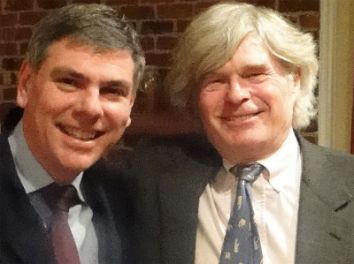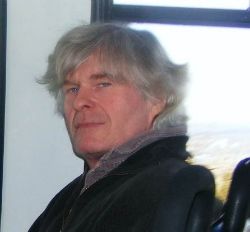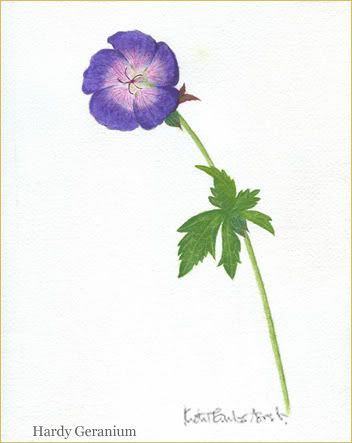Larry Auster got into a lot of (blog) arguments when he put up photos of well-known personalities, and commented on their appearance. These observations ranged from discussions on physical alterations like
plastic surgery, to sartorial decisions. One of his favorite (if that's the right term to use) personalities was Michelle Obama. He couldn't believe that the First Lady of the United States could
tarnish the image of the presidency as much as she did, through her inelegant and crass appearances. He believed that one's appearance was a reflection on one's personality.
I think he believed that conservatives presented themselves better than liberals. But in our liberal-leaning world, he also realized that many self-proclaimed conservatives are actually more liberal than conservative.
Well, here I compare the appearance of two conservatives, one true and one false: Larry Auster and Peter Brimelow.
 Left: Larry Auster, from a photo taken in 2013
Left: Larry Auster, from a photo taken in 2013
Right: Peter Brimelow, from a photo taken around 2011True to his precise and careful nature, Larry comes across as the conservative in this photo (which is cropped from a larger one taken by
Dean Ericson). He is ill, but he came out of his home in a smart and well-patterned checkered tie, which matches his long chocolate-brown coat, and a cream (not white) shirt. His hair, which had gone through various ravages of cancer treatment, is thin, but short and combed.
His slightly upturned mouth, with a shadow of a smile, shows that he is a little amused, perhaps by all the attention from the photo shoot. But his eyes are calm and observant, and kind. He takes Dean's effort seriously, and came out dressed and ready for the occasion.
Look at Brimelow. He's about the same age as Larry (according to Wikipedia, older by about two years, so the photos above show them at about the same age), and his health seems fine. Yet his face is red and bloated, and his eyes are barely open in the fleshy face. It looks as though he's gained weight. His hair is disheveled and long, and needs grooming as well as a cut. His tie is a dull gray, which matches the lusterless gray of is suit.
His photo was posted on Belgian politician
Filip DeWinter's website. DeWinter is fifty (only fifteen years younger than Brimelow, but still middle-aged), and the contrast between the two is great, with a vibrant and clear-eyed DeWinter standing alongside the puffy Brimelow.
 Brimelow and DeWinter in 2011
Brimelow and DeWinter in 2011
[Image Source: Filip Dewinter's website] Brimelow in 2013
Brimelow in 2013This is Brimelow's toddler daughter from his second marriage. His second wife, Lydia Brimelow, is thirty-seven years younger than him. They have another daughter who was born in 2012. He has two older children in their late teens from a first marriage. Their mother died in 2004.
I
wrote in 2012 about Brimelow, his young wife and their new born daughter:
Brimelow is close to seventy, which will make him an nonagenarian at his new daughter's college graduation, if he makes it that long. What kind of life has he subjected her to, with a senior citizen father, with his death imminent?
Such is the way of selfish, narcissistic men that "lead" the world these days. Of course, Brimelow is not a conservative, although that is what he uses to increase his website's readership. He is a libertarian.
I wrote about his second wife:
Sullivan has a hard glint in eyes like someone that goes after what she wants, and gets it. Such character doesn't discriminate by age.
Of course, our choices are determined by many factors, including the behavior of those around us. But, Brimelow could have tempered his behavior for the good, rather than for his gratification.
I think the consequences of his decision are what is showing in the photo below, which he posted at his public website Vdare. He is unshaven, with a tired smile. Toddlers require a lot of energy. His eyes also show ambivalence. Was this such a good idea after all?

I analyzed another photo of his, which he posted in December 2010 about three years after he married his second wife.
 Brimelow in 2010Here
Brimelow in 2010Here is what I wrote:
I believe that people demonstrate their inner conflicts and troubles in their expressions. Trying to cover them up only results in conflicted manifestations. Also, I believe that people with inner conflicts have a hard time deciphering their (and others') expressions. What looks strong may be weak, what looks attractive is subtly devious.
I don't mean to malign people, but Brimelow is a leaders of some kind who is asking us, mere plebs, to be his followers of sort. Brimelow wants us to read his online magazine Vdare. I recently wrote about his marriage to a woman almost forty years his junior, whom he met...through his online magazine! And now they have an infant daughter together. A sixty-something-year-old man with a twenty-something-year-old wife, and a new baby. Old enough to be the grandfather of his daughter is one unpleasant factor. But I wonder how this young girl will grow up, with an aging father who by the time she is ready to get married - the norm being in her twenties, like her mother is now - will be a real senior citizen who should be getting ready for his last rites?
-------------------------------------------------------------------------------------------------------------------------------------------------------------
Posted By: Kidist P. Asrat








